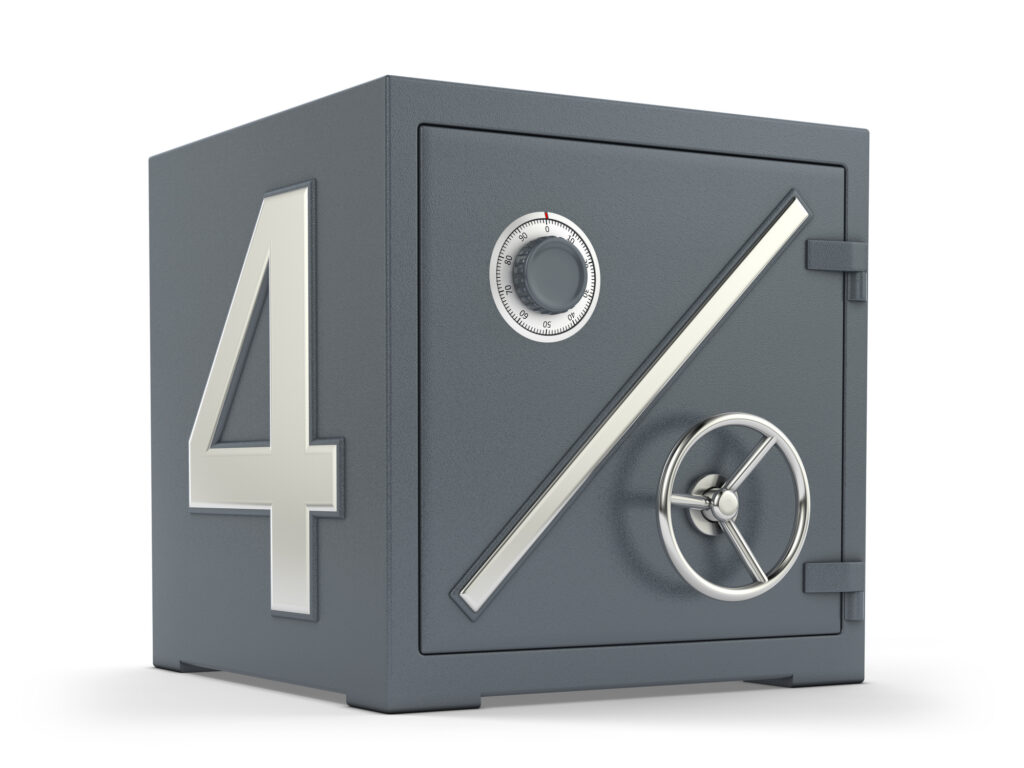
During your saving years, your main goal is to accumulate wealth so that you have the resources to achieve a comfortable retirement. But that’s just half the battle. The real key to living the retirement you dream of is in how you use your savings to cover your costs of living. You may have done some research on what strategies you can use to provide yourself the income and liquid cash you need to cover your expenses in retirement, and come across a few general, cookie-cutter strategies such as the 4% rule.
What is the 4% Rule?
The 4% Rule is a general rule of thumb that is meant to guide your decisions on how much you can and should withdraw from your retirement savings each year. The purpose of adopting the rule is to keep a steady income stream while maintaining an adequate overall account balance for future years. The withdrawals will consist primarily of interest and dividends on savings.
With a guardrail like this, you can get a good idea of how much you’ll need in savings to cover your costs and help avoid running out of money.1
Is the 4% Rule Realistic?
Experts are divided on whether the 4% withdrawal rate is the best option. Many personal finance experts say that 5% is a better rule for all but the worst-case scenario. And some caution that 3% may be safer in current interest-rate conditions… However, the truth is that the 4% rule is simply not a comprehensive strategy. Whether it’s 3%, 4%, or 5% will likely depend on your unique financial situation. And even then, your income may not even be set to come from investment withdrawals in the first place!
Where Does the 4% Rule Fail?
The 4% Rule makes a lot of assumptions and is simply not designed to be an all-encompassing, actionable strategy for anyone to pick up and use. It doesn’t factor in your healthcare coverage situation, it isn’t designed to avoid the 3 strikes of tax planning, and it doesn’t account for the location and liquidity of your wealth and savings.
The 4% Rule may provide you with a conversation starter with your financial advisor on how to turn your savings into income. There are many moving parts to a retirement plan that must be considered if your goal is to make the most of your savings. Click here to talk to us today if you want to take the next step forward in protecting your retirement plan for whatever the future may hold.
The article and opinions in this publication are for general information only and are not intended to provide specific advice or Recommendations for any individual. We suggest that you consult your accountant, tax, or legal advisor with regard to your Individual situation. This content was created by Lone Beacon.
Registered Representatives offer securities through Independent Financial Group, LLC (IFG), Member FINRA/SIPC. Investment Advisor Representatives offer Advisory services through Independent Financial Group, LLC (IFG), a Registered Investment Adviser. Cornerstone Wealth Management, Cornerstone Tax Advisory and IFG are unaffiliated entities.
This material was partially prepared by Lone Beacon and does not necessarily represent the views of the presenting party, nor their affiliates. The information herein has been derived from sources believed to be accurate.
No investment strategy can guarantee a profit or protect against loss.



